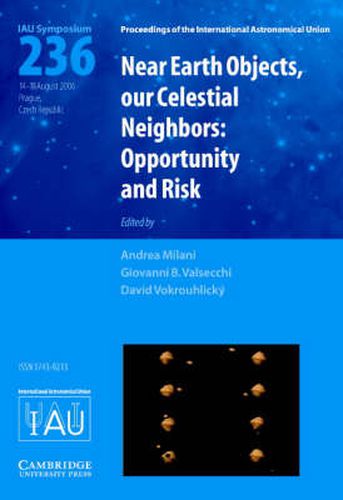Readings Newsletter
Become a Readings Member to make your shopping experience even easier.
Sign in or sign up for free!
You’re not far away from qualifying for FREE standard shipping within Australia
You’ve qualified for FREE standard shipping within Australia
The cart is loading…






Near Earth Objects (NEOs), asteroids and comets, are the closest neighbors of the Earth-Moon system. They allow research not yet possible on more distant bodies. The IAU Symposium 236 focused on the specific observation and modeling techniques for NEOs, including radar, exploration by spacecraft, measurement of non-gravitational perturbations; also on the next generation surveys expected to increase a hundred-fold the NEO discovery rate. With data from first generation NEO surveys, we now understand how they formed and evolve, dynamically and physically, opening a window on the universal astrophysical phenomenon of collision, leaving clear markings on the surfaces of planets, including the Earth. NEOs with orbits crossing that of the Earth are also a source of impact risks and potential NEO collisions with the Earth represent a long term threat. Mankind has to put in place a chain of mitigating actions; NEO astronomers have successfully put in place the first link.
$9.00 standard shipping within Australia
FREE standard shipping within Australia for orders over $100.00
Express & International shipping calculated at checkout
Near Earth Objects (NEOs), asteroids and comets, are the closest neighbors of the Earth-Moon system. They allow research not yet possible on more distant bodies. The IAU Symposium 236 focused on the specific observation and modeling techniques for NEOs, including radar, exploration by spacecraft, measurement of non-gravitational perturbations; also on the next generation surveys expected to increase a hundred-fold the NEO discovery rate. With data from first generation NEO surveys, we now understand how they formed and evolve, dynamically and physically, opening a window on the universal astrophysical phenomenon of collision, leaving clear markings on the surfaces of planets, including the Earth. NEOs with orbits crossing that of the Earth are also a source of impact risks and potential NEO collisions with the Earth represent a long term threat. Mankind has to put in place a chain of mitigating actions; NEO astronomers have successfully put in place the first link.